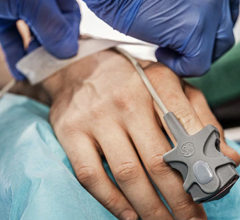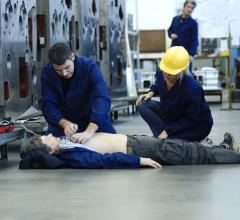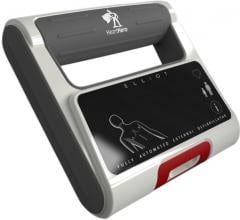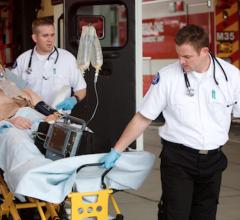
The Aspirus Heart & Vascular Institute (AH&VI) services 14 counties in north central Wisconsin and an additional seven counties in the Upper Peninsula of Michigan. The institute receives patients from five hospitals within its system and approximately 10 other hospitals from within this service area. With such a large, mostly rural population — patients come from as far away as 80 miles or more — the organization needed to find a way to more efficiently serve its ST-elevation myocardial infarction (STEMI) and heart valve repair patients.
Reducing Door-to-Balloon Times
According to American College of Cardiology (ACC)/American Heart Association (AHA) guidelines, door-to-balloon (D2B) times for STEMI patients should be no more than 90 minutes in order to minimize cardiac muscle damage and prevent heart failure. This time starts the moment a patient enters the emergency department and ends when a percutaneous coronary intervention (PCI) is performed. Seven years ago it took up to two hours to treat STEMI patients at AH&VI. In order to meet the guidelines, the organization set a goal to achieve the shortest D2B times in the safest manner possible. This required that the hospital administration look at average times to gauge how much of an improvement needed to be made. Luckily, this was half of the battle.
AH&VI published and posted D2B times for each operator, and by seeing their STEMI times alongside those of their peers, operators could gauge what was possible and set realistic goals for improvement. This transparency played a major role in cutting D2B times initially. “Just by showing each operator their times individually in front of their colleagues, the times were cut to less than an hour,” said Paul Luetmer, M.D., FACC, medical director, AH&VI.
The next step was a month of planning and implementing protocols to make an efficient STEMI program. The new STEMI program went live January 2007, and after operationalization of key strategies, AH&VI achieved STEMI times under 30 minutes, with times progressively decreasing ever since. According to Luetmer, today the average arrival-to-balloon time for a STEMI patient who medical staff know is coming is 18.4 minutes. For those patients who arrive unannounced, the time from first door arrival to open vessel is 38.4 minutes. AH&VI also has D2B times under 90 minutes (from time of presentation at the referral facility or diagnosis in the ambulance to vessel opening) for patients they have to pick up from as far as 60 miles away.
The Program
The STEMI program protocols begin moments before patient arrival. AH&VI has established close working relationships with many emergency medical services (EMS) in the region. Ambulance crews have pre-hospital electrocardiography (ECG) capability and ECG reports can be transmitted to the physicians at AH&VI by cell phone connection. This alerts medical staff to begin preparing for the patient. If a cell phone connection is not available, ambulance crews are authorized to use the computer evaluation to transmit ECG reports. Ambulances are stocked with aspirin and clopidogrel, and crews have a questionnaire to complete to make sure it is safe to administer these medications to patients. Ambulances are also equipped to initiate hypothermia protocols for patients post cardiac arrest. In order to maximize time, ambulance crews have a plan as to whether they stop at a local emergency room or go straight to AH&VI.
Another way AH&VI cut times before patient arrival is by adopting a “by any means necessary” approach. Because its service area is mostly rural, and sometimes very remote, getting an ambulance to patients is not always practical. Luetmer recalls a time when EMS personnel had to retrieve a patient from a deer stand. The patient had to be transported from the deer stand in a four-wheeler until EMS could get to a road that was ambulance accessible. The institute also has a helicopter, which they have used to immediately care for and transport patients.
“We very carefully evaluate each individual location as to whether it makes sense to call a helicopter or whether it’s faster if they have an ambulance ready to go,” Luetmer explained. AH&VI employs an intercept system that allows the helicopter and critical care ambulance to meet patients part way, or it sends a critical care team to jump into the ambulance with a patient and bring them the rest of the way.
According to Scott Garavet, cardiovascular service line administrator at AH&VI, the STEMI program has been planned down to the very last detail once the patient arrives at the institute. Every step has been thought out, including where the EMS team places defib patches, making sure the patient is undressed in the proper location, having security open all the doors en route to the cath lab, assuring the patient enters into the cath lab in the right orientation and making sure the IV pumps are on the correct side of the table. These very small details each may not impact time, but certainly count in aggregate.
The STEMI program has not only enabled AH&VI to have an average STEMI length of stay (LOS) of 3.7 days, but it also allowed the institute to save more lives. Luetmer said that due to these time-saving efforts, AH&VI’s mortality rate is less than 2 percent for those STEMI patients who are alive on arrival.
Improving Technology: TAVR
In addition to a STEMI program, AH&VI also set out to upgrade its surgical heart valve repair program by creating a transcatheter aortic valve replacement (TAVR) program that offers advanced, minimally invasive treatment options. In this specialized valve clinic, the multidisciplinary team, comprised of cardiologists and cardiothoracic surgeons, is able to offer patients in need of heart valve repair a comprehensive plan of care by the time they leave the clinic. While at the clinic, patients can see a heart surgeon and a specially trained valve cardiologist, and have a 3-D transesophageal echo (TEE), a stress test and a right and left heart catheterization — all in the same day.
This multidisciplinary approach lends itself all the way to the hybrid operating room where at any given time there can be nine or 10 types of medical professionals in TAVR procedure. This includes four or five specially trained physicians, such as a noninvasive cardiologist trained in 3-D echocardiography, an anesthesiologist, an invasive cardiologist, a cardiovascular surgeon and a vascular surgeon, all involved in the actual delivery of the device either transapically or tranfemorally. AH&VI originally performed exclusively transfemoral procedures, but when the transapical procedure was approved, it expanded the population of candidates that were eligible for TAVR. Currently, about 50 percent of the institute’s TAVR procedures are transapical and 50 percent are transfemoral.
In addition to TAVR, AH&VI’s heart valve repair and replacement program has improved overall. The data for the AH&VI valve program consistently is superior to the Society of Thoracic Surgeons’ (STS) national outcomes. For example, the isolated aortic valve (AV) surgery in hospital mortality is 0.6 percent, compared to the STS of 3 percent. The AH&VI mitral valve repair rate is 65 percent, compared to the STS national registry of 60 percent. In addition, AH&VI performs 40 percent of its isolated AV replacements with a minimally invasive sternotomy. In terms of LOS, mitral valve replacement is 6.2 days compared to STS of 10.3 days, and the AH&VI mitral valve repair LOS is 3.7 days compared to the registry’s 6.8 days. Isolated aortic valve replacement surgery LOS is 4.8 days for AH&VI, compared to 7.8 days for the STS.
Price to Pay
While AH&VI can cite thar referrals from different facilities have increased along with its reputation as a leader in TAVR, the TAVR program has increased the institute’s cost overall. According to Garavet, valves used in traditional non-TAVR procedures at AH&VI cost about $6,500 to $7,000. The Sapien valve used in TAVR procedures costs $32,500 — nearly five times more than non-TAVR valves — and the reimbursement is basically the same in both procedures.
“That’s one of the challenges as a healthcare system (physicians and hospitals), that we are faced with,” he explained. “How do you provide leading healthcare to patients when the economics are not favorable to do so?”
Program leaders (physicians and hospital administration) at AH&VI continue to work with the industry to inform them of the challenge in hopes of cutting costs, and this price decrease should happen as the technology continues to gain popularity.
“When there’s only one vendor out there they get a premium, and when there’s two vendors that premium goes down. We think just basic economic pressures are going to lower [costs],” Garavet said. In the meantime, AH&VI has chosen to adopt the technology, despite cost, because of its quality of care.
Time, Transparency and Cost
Valuing what is beneficial as opposed to what is profitable, or even what is easy, has proven to be an important lesson for the AH&VI staff while implementing both the TAVR and STEMI programs. Garavet explained that institutions looking to invest in TAVR and STEMI programs must understand the commitment, financial challenges and resources that are required to implement the programs. Once this understanding is obtained, an institution can then make an informed decision on whether or not the commitment is worth making. “If you’re not willing to do that level of commitment, then it’s frankly a very complex procedure and involved process, and [you] shouldn’t do it,” said Garavet.
Luetmer added that organizations must ask the right questions to build a proper foundation for their programs. While many focus on what type of hybrid room is needed or what needs to be built or bought, Luetmer said that the most important aspect in implementing a successful TAVR or STEMI program is the development of relationships. There needs to be trusting relationships between heart surgeons, cardiologists and administration that allow them to speak openly about what needs to be done. He recommended that organizations have a very strong nurse coordinator and a highly motivated staff that are willing to take extra time to learn new skills and feel personally responsible for the outcome. Lastly, he emphasized transparency and a culture of looking at results openly in front of peers to constructively make improvements, a process he admitted can be pretty uncomfortable. “You really have to be willing to honestly look at what the outcome is and improve based on that,” he concluded.


 July 28, 2023
July 28, 2023 









